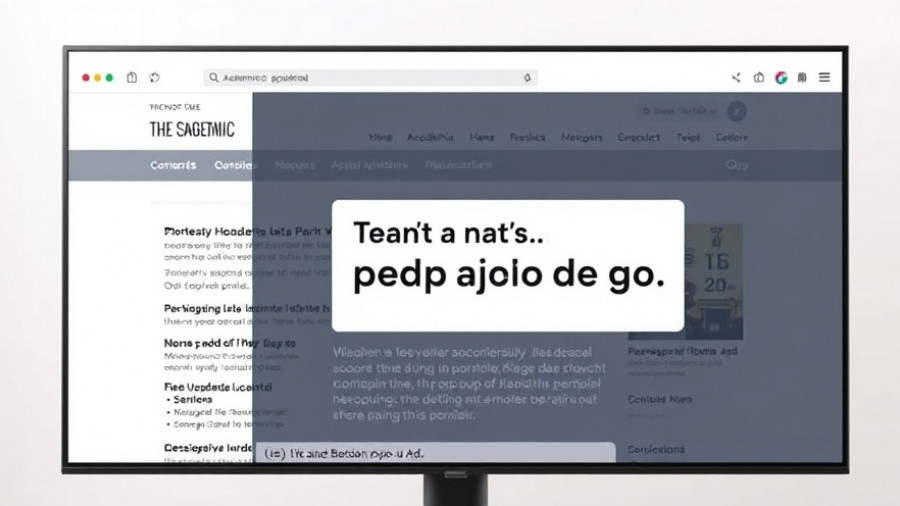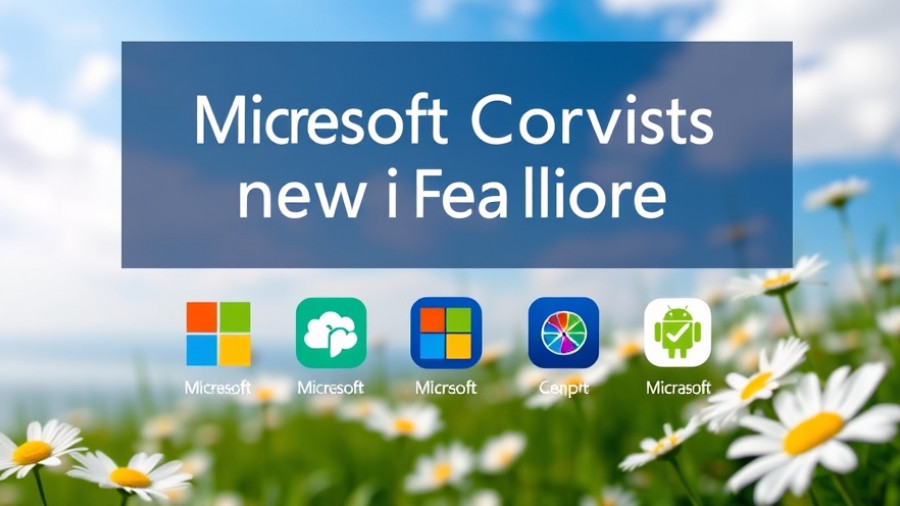
Exploring Microsoft's Latest AI Move: Anthropic's Claude Integration
In a bold shift to diversify its AI capabilities, Microsoft has announced the integration of Anthropic’s Claude into its workplace-focused AI service, 365 Copilot. This is a pivotal step as Microsoft aims to broaden its AI models beyond its deep-rooted investment in OpenAI, strategically welcoming Anthropic's advanced offerings.
What Claude Brings to 365 Copilot
Microsoft has rolled out two significant enhancements within 365 Copilot thanks to Claude. The first enhancement is found in Researcher, a feature that empowers users to conduct comprehensive analyses by aggregating information from emails, Teams chats, and internal documents alongside internet searches. Traditionally relying on OpenAI models, users can now opt for Claude’s Opus 4.1 model. This powerful iteration is designed to assist in complex tasks such as developing detailed go-to-market strategies and analyzing evolving product trends, thereby enhancing decision-making processes.
The second notable application of Claude is seen in Copilot Studio, where users can create customized AI agents. With the addition of Claude Opus 4.1 and Claude Sonnet 4, users are afforded greater flexibility in crafting automation workflows. The capability to orchestrate teams of agents powered by various AI models opens up avenues for more nuanced and collaborative project management. This integration positions Microsoft as a dynamic player in the AI landscape, leveraging diverse models to suit varying business needs.
A Broader Sign of AI Trend Adaptation
Microsoft's adoption of Anthropic's models indicates a strategic pivot toward a more flexible AI ecosystem. The implications are profound; as businesses increasingly rely on AI for efficiency and analysis, incorporating various models could bolster the effectiveness of tools like 365 Copilot. By mitigating dependency solely on a single model, Microsoft protects its offerings from potential weaknesses or limitations associated with one source.
Moreover, the expansion aims to cater to a wider range of enterprises and their unique requirements, emphasizing customization in AI operations.
The Impact on Businesses: What to Expect
Businesses using Microsoft 365 Copilot can expect a suite of enhanced functionalities. With Claude’s integration, tools that handle research, reporting, and automated workflows become more potent. By utilizing technology capable of mimicking human reasoning, organizations can bolster productivity across diverse sectors including marketing, product development, and operations management.
For instance, the ability for teams to create tailored AI agents means that an organization could apply Claude’s models specifically to address industry-specific challenges, optimizing workflows in ways previously thought unattainable.
What Lies Ahead: Microsoft’s AI Marketplace
Aside from integrating Claude, Microsoft has hinted at further ambitious plans, including an AI marketplace aimed at news and media publishers. This is expected to provide a platform for content providers to sell their offerings to AI companies for model training, thus enriching the pool of data available for AI learning.
This marketplace symbolizes a convergence of media and AI, reinforcing the notion that as AI grows, so must the ecosystems around it. Companies can find new revenue streams while also contributing to the growth of AI's learning capabilities.
Conclusion: Embracing AI Innovations
In a rapidly evolving technological landscape, Microsoft’s integration of Anthropic’s Claude into its AI arsenal signifies a noteworthy expansion of AI capabilities in workplace applications. Businesses now have powerful tools at their disposal, promising to enhance research practices and automate workflows efficiently. As companies embrace these advancements, understanding and leveraging AI’s innovations will be critical to maintaining competitive edges.
Microsoft's advancements in AI signify not just a technological leap but also an industry-wide pivot that other platforms may soon emulate. Companies seeking to enhance their AI interfaces should closely monitor these developments, as they could dictate future trends in AI implementation.
 Add Row
Add Row  Add
Add 




Write A Comment